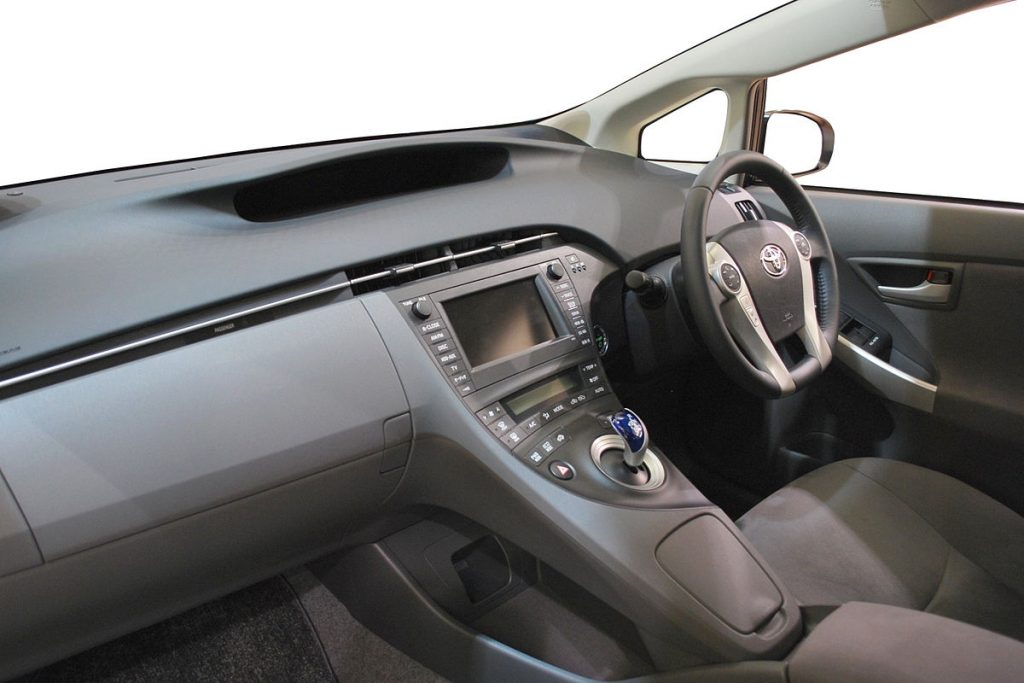YEREVAN (A.W.)—Anyone frustrated by the lack of consensus in Armenia over which side of the car the steering wheel should be placed might be pleased to hear news that officials have recently announced a plan to ban the import of cars with right-hand steering wheels starting April 1. But as recent protests demonstrate, some drivers in Armenia are anything but happy about it.

In most countries, the side of the car on which a steering wheel is located usually corresponds inversely to the direction of car traffic. The United States, for example, which was the first nation to officially adopt right-hand traffic infrastructure in the early 1900s, keeps its steering wheels on the left side, as it was determined that having the driver seated near the center of the road would be more practical, enabling him or her to judge the space available when passing oncoming cars and to allow front-seat passengers (in particular, women) to get out of the car onto the pavement instead of into the middle of the street. In left-hand traffic jurisdictions, like Japan or the United Kingdom, the reverse is true.
In Armenia, however, though the country’s official traffic laws adopt a right-hand traffic jurisdiction, there is not yet a strict regulation regarding which side of the car the steering wheel should be located, and cars of both orientation can be found traversing the roads. According to a statement by the MCTIT, the decision to begin to filter out right-hand drive cars was made for safety reasons, because the ministry considers them to be dangerous to local traffic.
About a week after the announcement was made, a group of angry drivers gathered outside Armenia’s Ministry of Transport, Communication, and Information Technologies (MTCIT), on Dec. 22, to protest the decision. Protesters said they are upset because they are not convinced that RHD cars are less safe, stating instead that such cars are responsible for a very minimal portion of accidents on the road. According to a Tert.am report, Yegor Karapetyan, chief of Armenia’s traffic police, has stated that the number of accidents from RHD cars are not that large, and that for a time made up only 10% of accidents. He added that according to data provided by the police in 2017, as of Sept. 30 right-sided steering wheels made up 31,415 of registered vehicles.
“You say that this is being done for safety,” protester Gevorg Achemyan told JAM News. “We want a basis for this argument. If right-hand drive cars were responsible for 11 percent of accidents, this doesn’t mean that it was namely the drivers that were guilty.”
According to reports, Minister Vahan Martirosyan listened to the arguments presented by the protesters and said he was open to negotiations, but maintained his position that only left-hand drive cars should be operated on the roads. One protester even offered to take the minister out for an hour in his left-hand driving car to see how safe it was, but the minister declined.
The measure will not have a retroactive effect, which means that the owners of all right-side steering wheels imported before the ban date will be free to use, register, and re-register their vehicles. Owners of cars, however, are worried that they will be unable to sell the vehicles and that the value of their car will decrease significantly in case they ever wish to sell. One protester explained that in a country like Armenia, where it is difficult to make money and cars provide a livelihood for so many, “you can’t forbid people from selling their property when they need to do so.”
On Jan. 7, Yerevan-based Lurer.am reported that angry drivers were continuing their protest, through what they were calling the “Aj Ghek,” or “Right Steering,” Initiative. The drivers moved from Erebuni Avenue to the National Academy of Sciences building, and called on the citizens to come out and fight against the law.
The MCTIT released a statement on Jan. 8 saying that a revised version of the proposition, which took into account some of the protesters’ concerns, had been submitted for further consideration.
According to to a report by RFE/RL’s Armenian service, the protesters temporarily stopped their demonstrations after authorities announced on Jan. 8 that even though the ban on RHD imports would still be enforced, vehicles would still be allowed to operate after April 1. Nonetheless, “Aj Ghek” organizers said they would continue their fight in the near future until the ban on importing RHD vehicles is completely reversed.


When there is no clear Law & Order, I imagine will be very Chaotic city Yerevan!
The government is right, sort of. The country needs to establish a standard. The ban should actually be a heavy tax instead in order to discourage these vehicles, so that was someone can have the option to get such a vehicle if that’s what they really want. People are complaining because they are getting the right hand vehicles cheaper. If the reverse was true, they wouldn’t have any incentive to own right hand drive vehicles.
So people from Great Britain and Ireland should be banned from driving on the Continent? I don’t see why these cars should be banned. Is there any evidence that they increase traffic accidents?